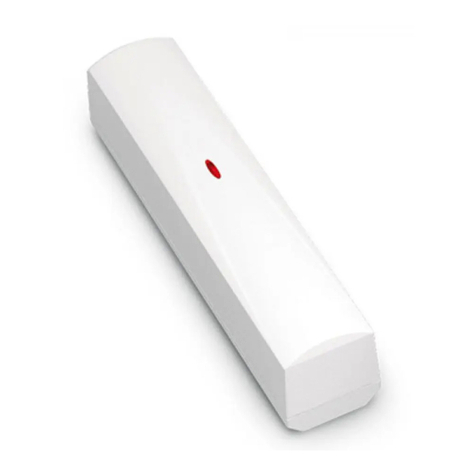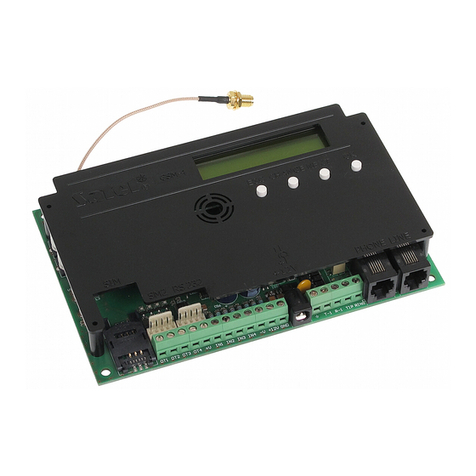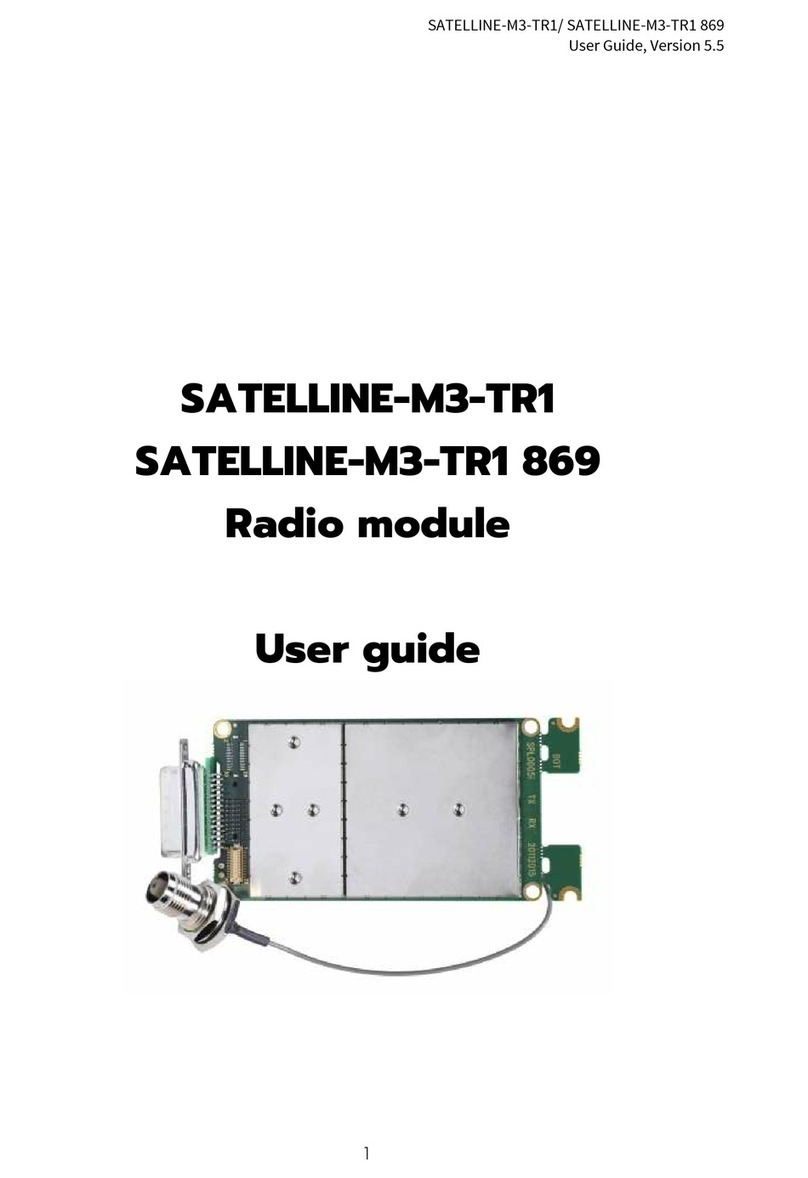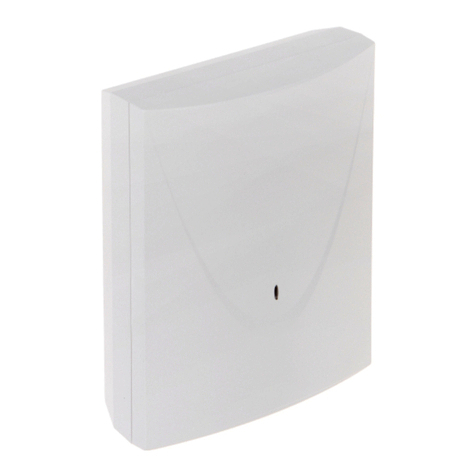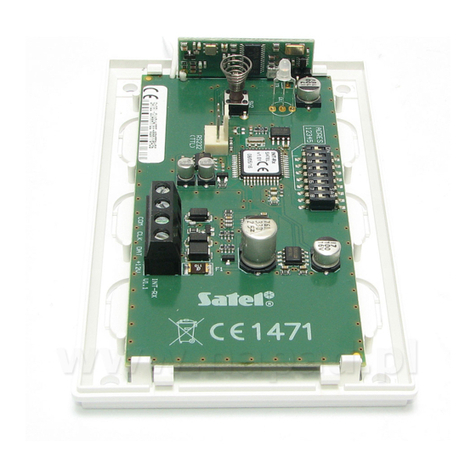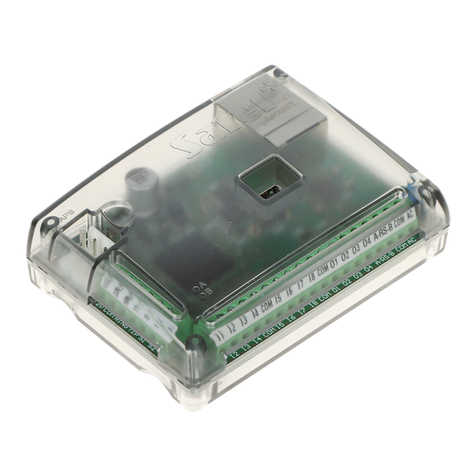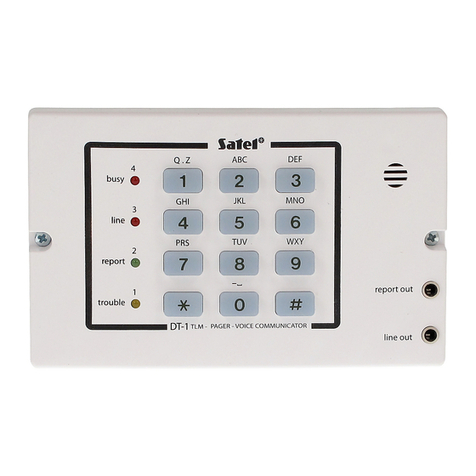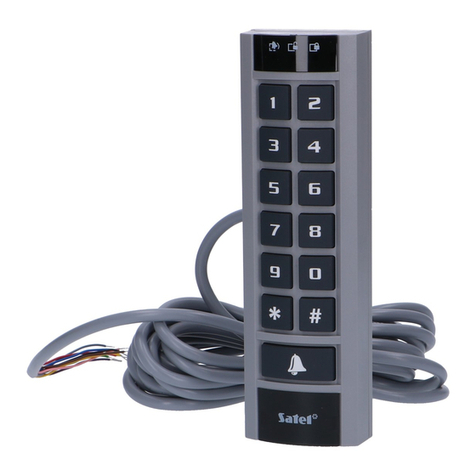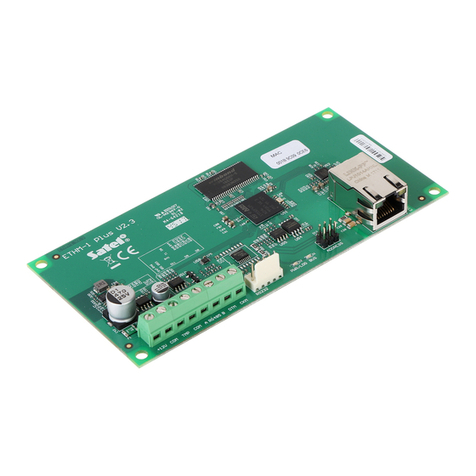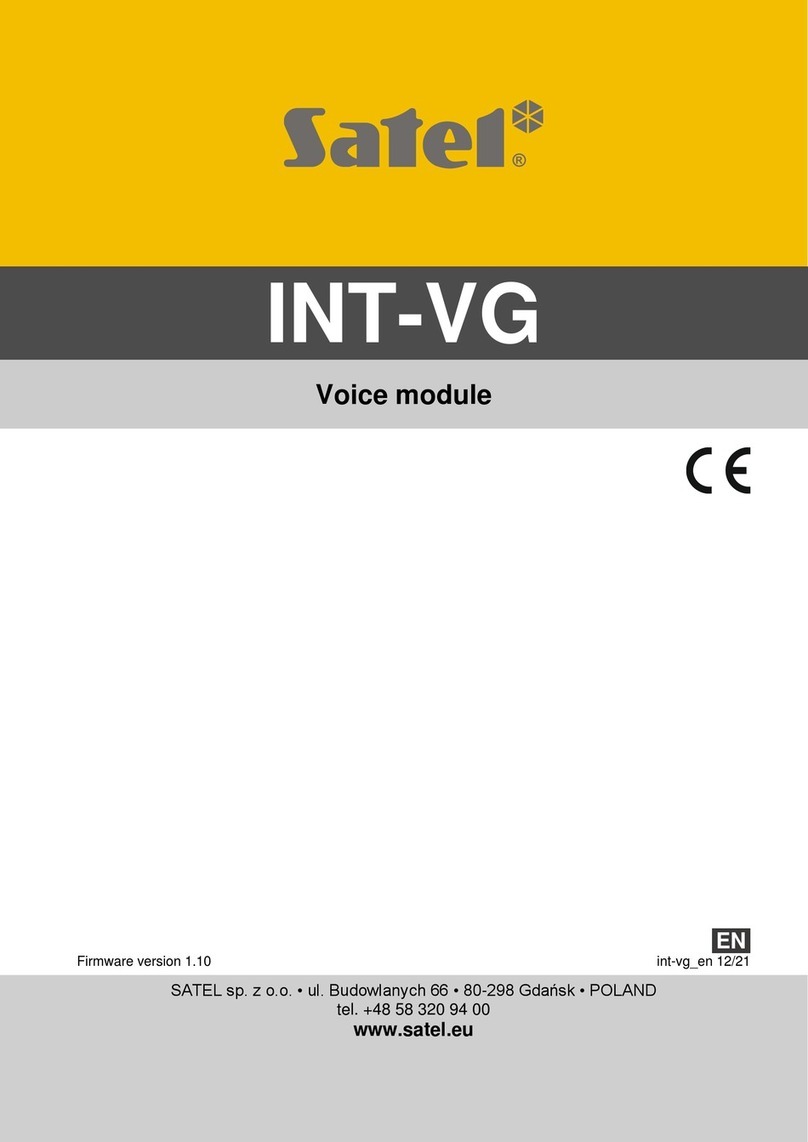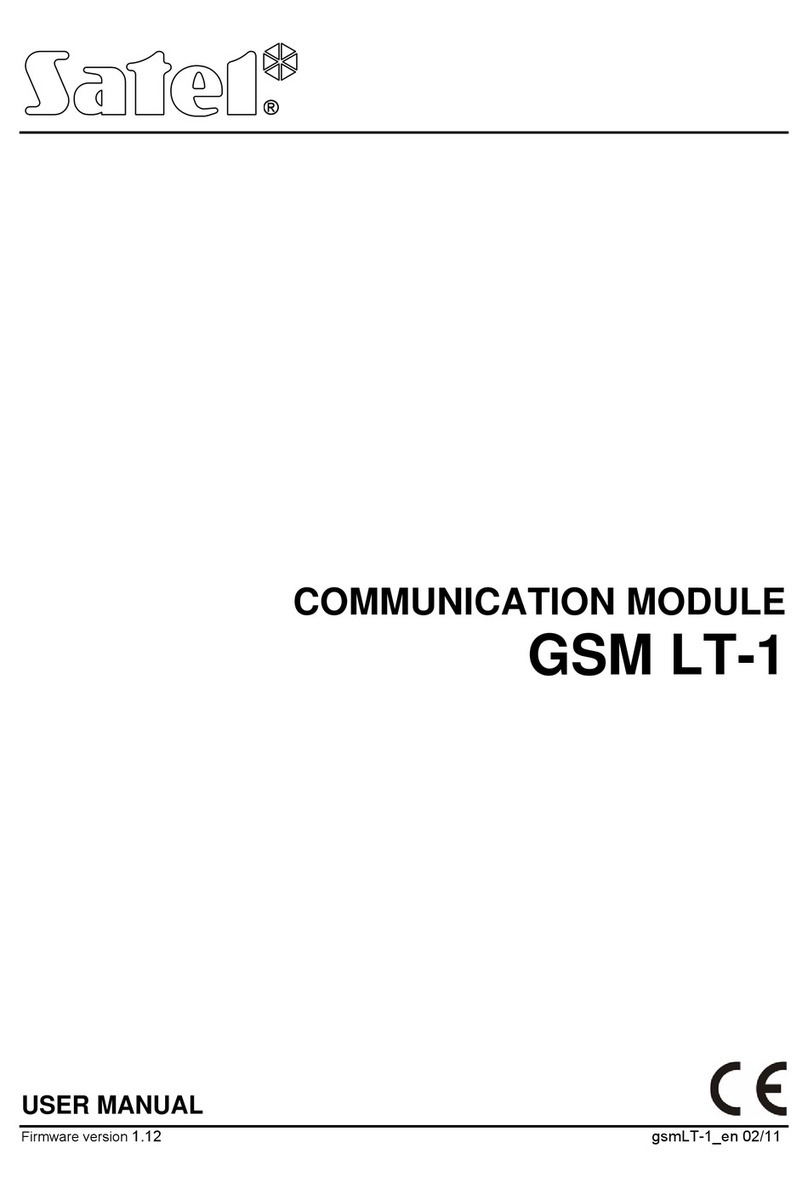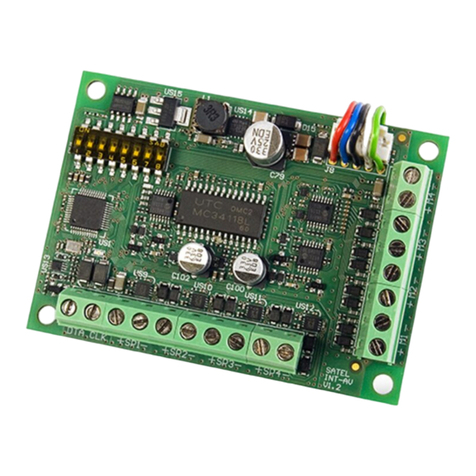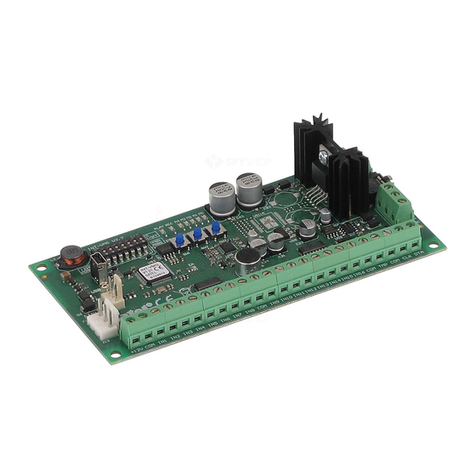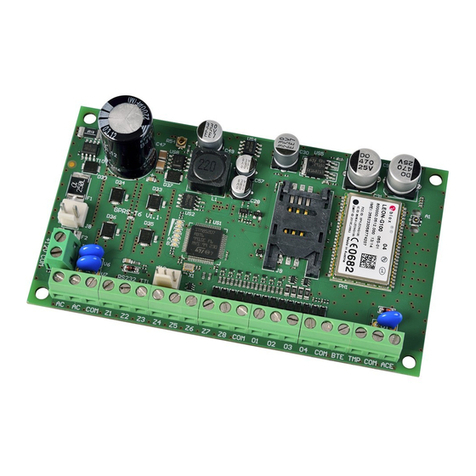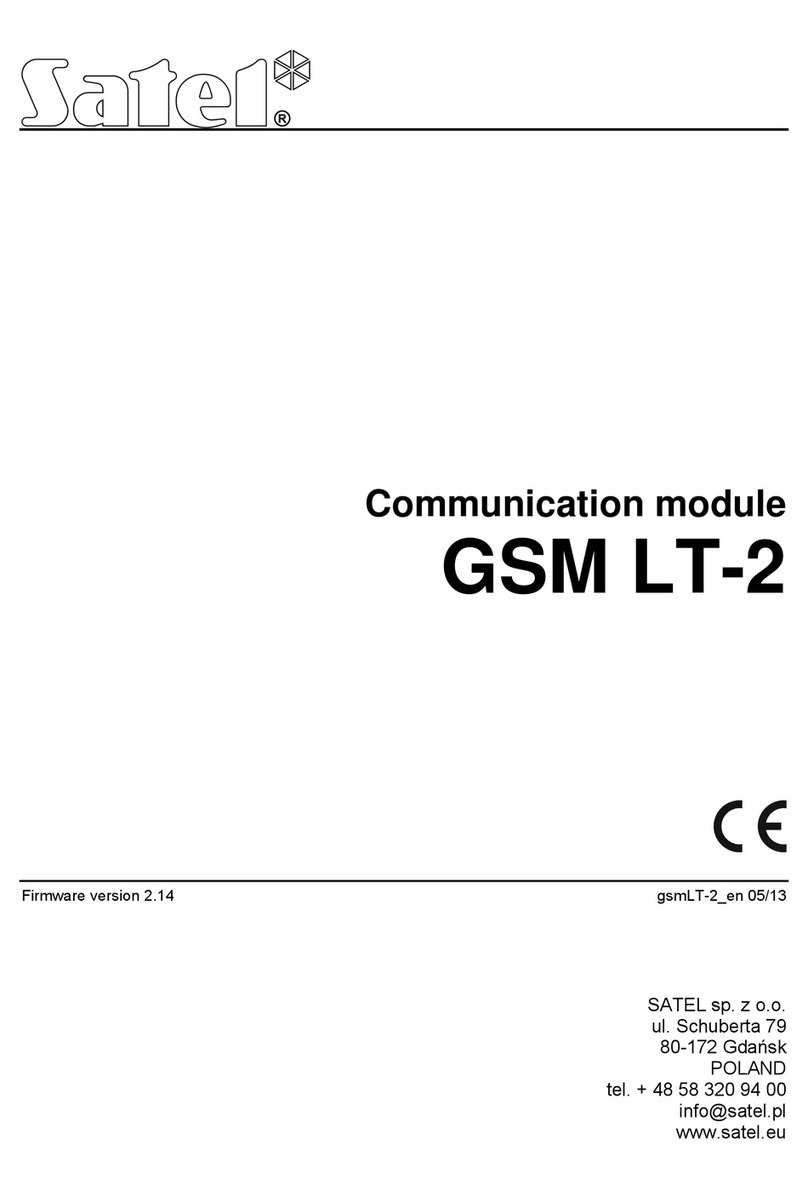8 User manual GSM LT-2
The example of module connection to station is shown in Fig. 4.Connect the GSM LT-2
module to the computer serial port (COM1 or COM2) with a cable made according to
Figure 6. Such a cable, designated with the DB9F/RJ-KPL symbol, is available in the
SATEL's offer.
8. INPUTS
The GSM LT-2 module is fitted with four inputs whose technical design is similar to that of the
control panel zones. Support of the inputs consists in monitoring any changes of their status.
Supervision of individual inputs can be bypassed by the module user. The inputs are
supported by the module irrespective of the telephone line support (R-1, T-1).
8.1 DESCRIPTION OF THE INPUTS
The detectors of both types, NC and NO, can be connected to the inputs of the module.
The type of detectors is to be entered in the service function 43.
The first parameter, the sensitivity of the input is programmed for each input (functions
45-48). The sensitivity of the input is defined as a minimum time which must elapse from
the moment of the status change at the input (open for NC input, closed for NO input),
in order to classify such change as violation of the input. This time delay can have the values
within the range from 20 ms to 1275 ms.
The time to restore the input is the next parameter to be programmed for each input
(function 44). Time to restore the input is defined as a time period that must elapse from the
end of input violation to the moment when the input can register a next violation (4 seconds
or 4 minutes).
Controlling the operation of inputs consists in bypassing and unbypassing their operation.
This control can be performed manually or remotely. The manual bypassing option can be
disabled (in service mode, using function 95). The remote control is effected by means of
a telephone which supports DTMF signaling (functions 82–91) as well as through SMS
messages (functions 71–80).
The input can be automatically bypassed after 1–15 violations, for a specified time, or
permanently (functions 49–60). The input is bypassed after the end of violation. Input can
also be bypassed after violating another input (designated as the bypassing input
- function 70). The bypassed status of the inputs as a result of violating the Bypassing input
will last as long as the given input is violated.
8.1.1 Bypassing by DTMF signals from R-1, T-1 terminals
To have the remote control by dual tone phone push-button (connected to R-1, T-1 terminals)
it is necessary to properly program the module by using the service functions, as follows:
•Enter the device service mode.
•Using function 95, determine the inputs to be bypassed manually.
•Program the (6-digit) control code to enable the inputs to by bypassed/unbypassed
locally – function 96.
•Exit the service mode by hanging up.
In order to bypass/unbypass an input do the following:
•Pick up the telephone receiver and enter the control code (if valid – the device will
generate four short and one long beeps).
•Bypass/unbypass input (according to the scheme described in function 96). Acceptance of
the command will be acknowledged by three short beeps.
Replace the receiver to make the device return to its normal operating mode.
